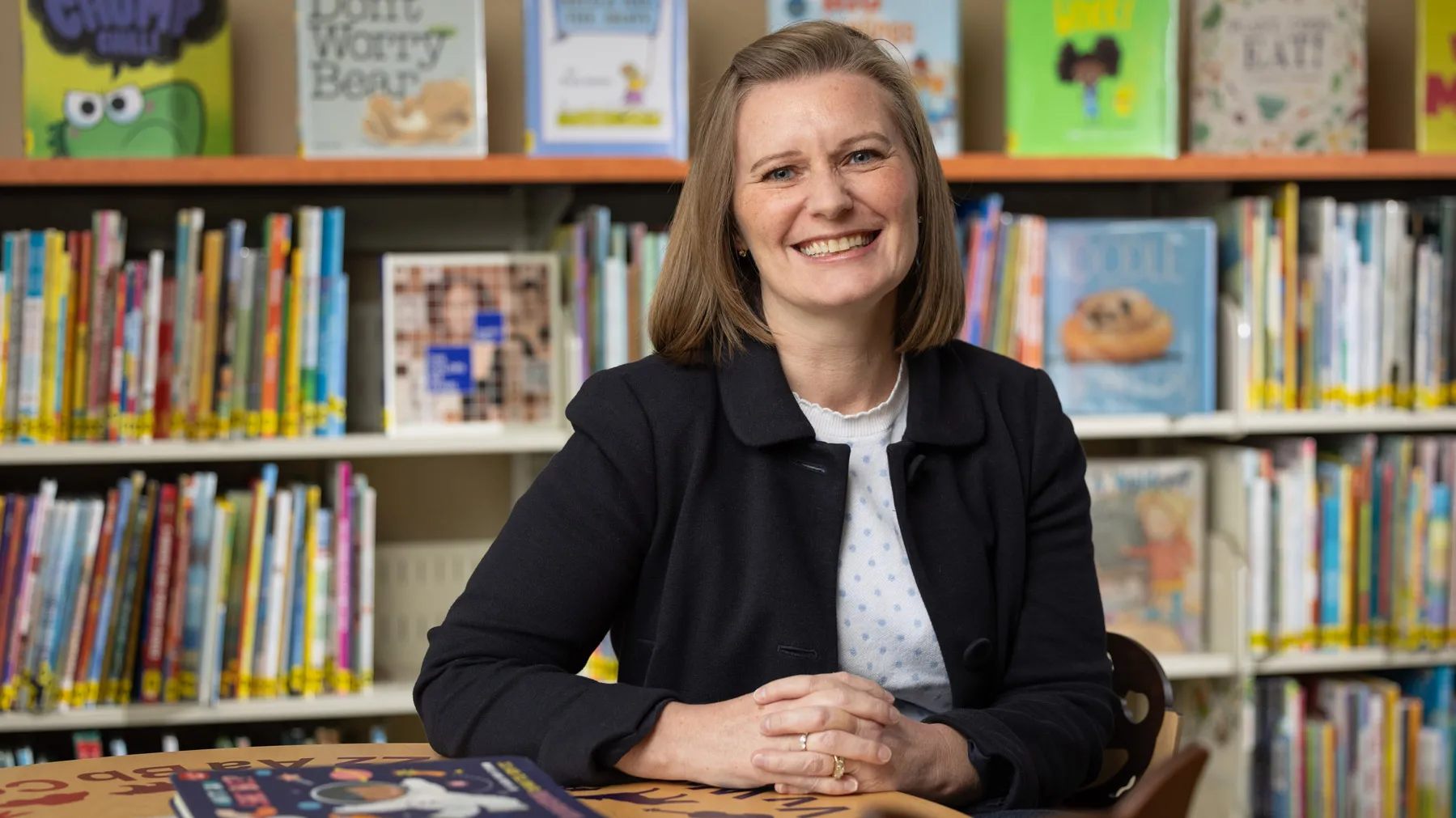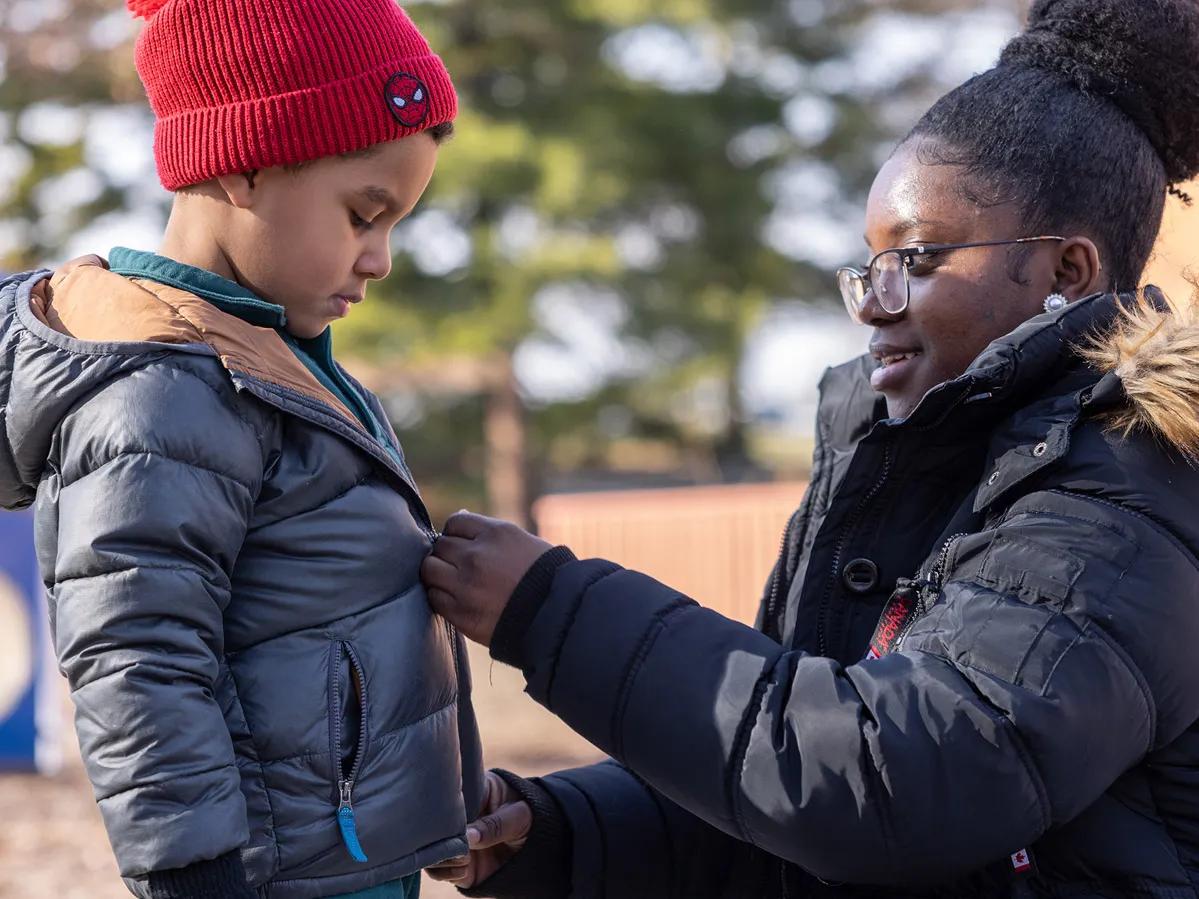Know a child struggling to read? Meet Shayne Piasta
An Ohio State professor and expert in childhood literacy, she has practical advice for alumni with questions about helping kids to develop this critical skill.

Professor Shayne Piasta specializes in using data analysis to study which educational programs and practices work best. (Photo by Jodi Miller)
Remember learning the alphabet? Reading your first sentences? The magic of picture books? Those were the building blocks of literacy skills and set a tone for crucial lifetime skills.
Unfortunately, today’s national statistics paint a dim picture of our children’s reading ability. But experts such as Professor Shayne Piasta, who specializes in early and middle childhood reading and literacy in the College of Education and Human Ecology, are helping us understand what is essential to turning those numbers in the right direction.
Her research into the science of reading examines early literacy development and how it is best supported during preschool and elementary years. Here, Piasta answers alumni questions.
-
My oldest child loved “Sesame Street” and being read to. He read early and continued to love reading. His brother was read to less, saw less “Sesame Street” and never developed the same love of reading. Do you see this often? — Teresa Lewandowski ’81 MS
I can’t speak specifically to “Sesame Street,” but we have evidence that the amount and frequency in which young kids engage in reading — whether reading themselves or caregivers reading to them — is positively associated with reading outcomes and things like intrinsic motivation.
There is certainly a pattern that exists, and this is why having early access to books, seeing parents model reading and understanding the authentic purposes of reading are so important — as well as why it’s so important to get kids on these successful trajectories even within early childhood.
-
How, as a parent, do I help support my child who is behind in literacy? — Deanna Reynolds-Griffin ’06
First, I would communicate with the child’s teacher. You don’t want to do anything that’s drastically different from the teacher’s approach. You also want to confirm exactly what it is that would be helpful to work on.
Some practices in general that are important include providing a rich language and literacy environment at home, along with helping the child understand the meaningfulness of reading and writing — it’s not just for schoolwork; it’s also for things like reading instructions or writing a grocery list. Giving them real purpose helps with intrinsic motivation for reading.
Engaging in shared book reading is also great. Include a variety of types of texts, not just storybooks but nonfiction topics, and lean into your child’s interests, such as comic books or superheroes, to give them a path to valuing literacy. Also, play with words and the alphabet, even noticing this in what we call “environmental print,” such as at the grocery store where there are tons of opportunities to talk about letters and patterns you see.
-
How do I help my 8-year-old who tends to skip words when reading? — Ryan Work ’05
Even though it might not seem to us, as adult skilled readers, that we are paying attention to every word on the page, we actually have eye gaze research that shows we do process almost every letter. And so for children who might be skipping words, you want to really encourage them to focus on the text and use some strategies to help them maintain focus. That could be something as simple as having a notecard they could put under the line of text they’re reading. It could be even just having them point to each word as they’re going along.
The other strategy would be to ask them to monitor their comprehension. Teaching them — you get to the end of the sentence, the end of the paragraph — did that all make sense? Do you need to go back and re-read or are you OK to move on?
-
With the decrease in print materials and increase in digital media, do you see this hurting students’ preliteracy skills? — Regina Sackman ’91, ’01 MA
There are pros and cons. There’s accumulating evidence, for example, that children can learn new vocabulary through interacting with digital media or using media to interact with adults who aren’t there in the present moment with them.
However, recent meta-analyses have shown that reading printed text tends to be more beneficial for reading comprehension and that the benefit is stronger perhaps for our younger readers. So it suggests we need to ensure children are still reading actual books.
There was nothing that said digital text reading was harmful, just that you’re not getting the same deep processing you’d get from printed text.
-
Do you support explicit phonics instruction for all learners, exclusive of other methods? — Nancy Parks Bertrand ’83 PhD
Our evidence is very strong that explicit systematic phonics instruction is key for literacy learning. That being said, it’s also critical we use data and assessments to identify both areas of strengths and areas of needs in terms of literacy learning for each child and then differentiate instruction accordingly, such as using small groups or assigning different texts, things like that.
Ultimately phonics instruction is fundamental and essential, but it is insufficient on its own. The ultimate goal is comprehension, I believe all scholars would agree. But that means we can’t be exclusively phonics, we also have to have opportunities to build language, to build background knowledge, to build motivation and other comprehension-related skills.
Learn more
Shayne Piasta talks about the science of reading and teaching phonics in this Now at Ohio State podcast, which also features pre-K teacher Meredith Schilling ’06, ’08 MS.



